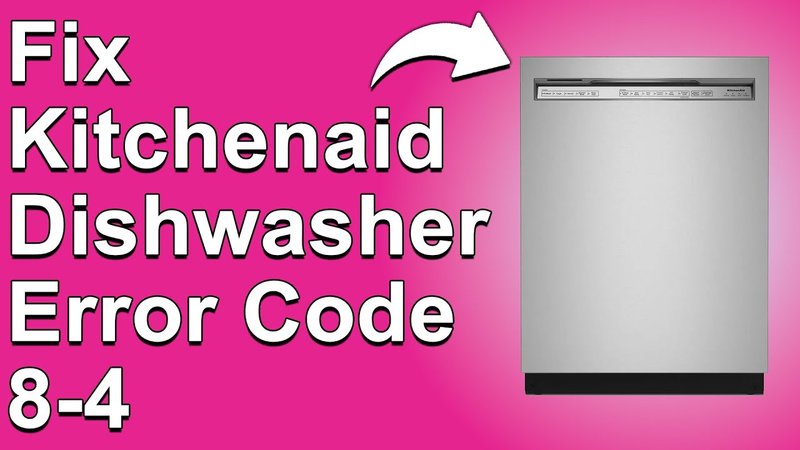
Error Code LE can indeed seem like a mystery! But don’t worry, it’s simply a way for your dishwasher to communicate that there’s a problem somewhere. Sure, it might be a bit frustrating, but understanding what this code means can be your first step toward a solution. It’s like having your car’s check engine light come on — you might not be able to fix it yourself, but at least you know something needs attention. So, let’s dive into the possible causes of the LE error code and uncover what might be happening inside your KitchenAid dishwasher.
Understanding the Error Code LE
First off, what exactly does Error Code LE mean? Whenever your KitchenAid dishwasher displays this code, it’s giving you a heads-up about a motor problem. Think of the motor as the heart of your dishwasher. Just as your heart pumps blood throughout your body, the motor moves water through your appliance to clean the dishes effectively. If the motor isn’t working correctly, your dishwasher can’t do its job.
Why would the motor be causing issues? Well, there are a few possibilities. It could be that the motor itself is malfunctioning. Over time, just like any machine, parts of the motor can wear out or get damaged. Imagine running a marathon day after day; eventually, your joints might start to ache. That’s how your dishwasher’s motor feels after years of constant use.
Another reason could be electrical. Sometimes, the connections between the control board (the brain of your dishwasher) and the motor can get loose or corroded. It’s a bit like trying to listen to music through headphones with a broken wire; you hear only silence or static. When these electrical hiccups occur, your dishwasher’s motor might not get the signal it needs to operate, triggering the LE error.
Common Causes of Error Code LE
Now, let’s get into more specifics. One of the most common culprits behind Error Code LE is a jammed motor. Picture this: your dishwasher’s sprayer arms spin around to distribute water over the dishes. Sometimes, debris or even a broken piece of dishware can get lodged in the mechanism, causing it to jam. When this happens, the motor might be working overtime without achieving any success, leading to an error code.
Next, consider the capacitor. It’s a small but powerful component that gives the motor an initial jolt of electricity to get it started – think of it as a pep talk before a big race. If the capacitor fails, the motor won’t start at all. So, an LE code might mean it’s time to have the capacitor checked.
Lastly, there’s the water pump. Its job is to circulate water effectively. If it becomes clogged or is on the fritz, the motor can’t do its work right, because the water isn’t flowing as it should. Imagine trying to drink a thick milkshake through a tiny straw — frustrating, right? That’s what your dishwasher experiences when the pump is blocked.
How to Fix Error Code LE
Okay, so now we know the potential causes. What can you do about it? For starters, if you suspect a jam, carefully check the sprayer arms and the bottom of the dishwasher for obstructions. Make sure the dishwasher is off and unplugged when you do this — safety first!
If you’re comfortable tinkering a bit, you can check to see if any wires between the control board and the motor are loose or damaged. Remember, though, if you’re not confident, it’s always best to call in the professionals. They have the right tools and know-how to diagnose and fix electrical issues without causing more harm than good.
Another potential fix for the savvy DIYer involves checking the capacitor. Unfortunately, this can be slightly intricate and might require a multimeter to test its functionality. If this sounds overwhelming, it’s perfectly fine to call in a service technician to handle it for you.
Preventative Tips and Next Steps
To prevent future occurrences of the LE error code, regular maintenance is key. Run your dishwasher with a cleaning agent every few months to break down any build-up or residue. It’s a bit like taking your car in for regular oil changes—keeping things in top shape helps avoid bigger problems down the road.
Also, be mindful of what you put into your dishwasher. Large chunks of food or non-dishwasher-safe items can cause jams, so it’s wise to scrape off excess food and be discerning with what you load.
In the long run, keeping an eye on your trusty KitchenAid dishwasher and addressing small glitches early can help ensure it continues to serve you well. And next time you see the LE error code pop up, you’ll know exactly where to start!